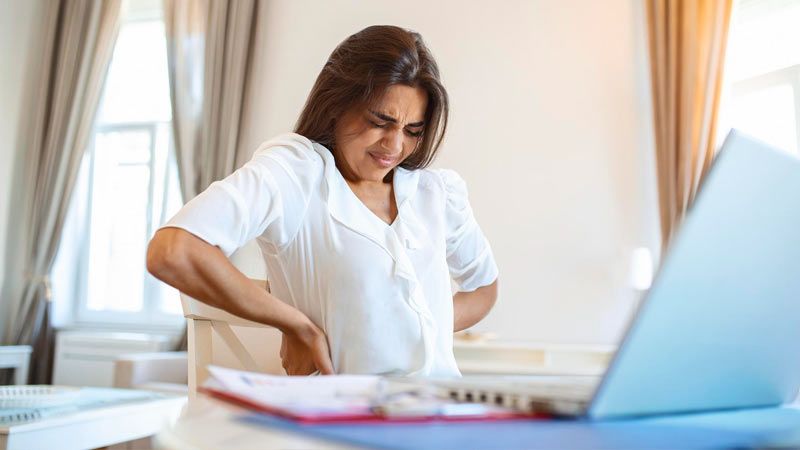Common Spine Problems: Symptoms And Treatment
- 21 months ago
The spine is a remarkable and intricate structure that provides the foundation for our movements, balance, and overall well-being. It serves as the central pillar that supports us through the hustle and bustle of daily life.
You wake up one morning, ready to tackle the day ahead, only to be greeted by a nagging ache in your lower back that refuses to go away. Or perhaps you've experienced a shooting pain down your leg after lifting a heavy object, leaving you feeling helpless and immobilized. These scenarios are all too familiar to those who have encountered spine problems, and they are reminders of the importance of understanding, preventing, and treating these issues.
In this blog, we will explore some of the most common spine problems, and their causes and discuss prevention and treatments.
1. Herniated/ Slipped Disc

A herniated disc (slipped or ruptured disc) occurs when the soft, gel-like center of a spinal disc protrudes through a crack in the tough outer layer. This condition often develops due to aging, wear, tear, or sudden injury. Common symptoms include localized or radiating pain, numbness, tingling, and muscle weakness.
Treatment options may range from conservative measures such as rest, physical therapy, and pain medication to more invasive interventions like epidural injections or surgery.
2. Osteoarthritis
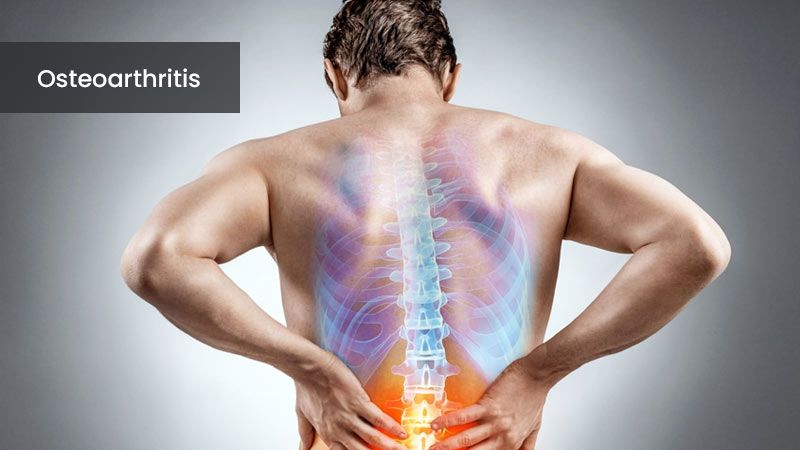
Osteoarthritis, the most common form of arthritis, can affect the spine and cause chronic pain and stiffness. It occurs when the protective cartilage that cushions the joints breaks down over time. Osteoarthritis in the spine can lead to the formation of bone spurs and the narrowing of the spinal canal.
Symptoms may include back pain, limited range of motion, muscle weakness, and numbness or tingling in the extremities. Treatment options for spinal osteoarthritis include pain medication, physical therapy, exercise, lifestyle modifications, and in some cases, surgical interventions like spinal fusion or joint replacement.
3. Sciatica

Sciatica is a condition when the pain radiates along the path of the sciatic nerve, which extends from the lower back through the hips, buttocks, and down each leg. It is often caused by a herniated disc, bone spur, or narrowing of the spinal canal.
Symptoms include sharp, shooting pain, tingling, numbness, and muscle weakness. Treatment options for sciatica include pain medication, physical therapy, hot/cold therapy, spinal injections, and in severe cases, surgery.
4. Spinal Stenosis
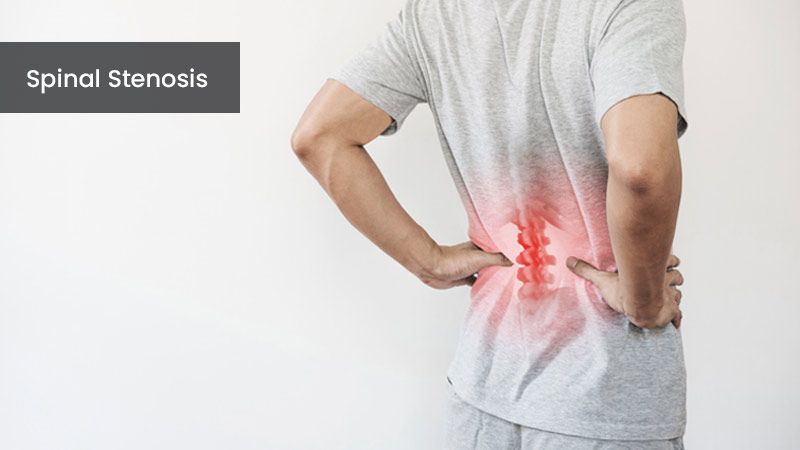
Spinal stenosis is a narrowing of the spinal canal that causes compression of the spinal cord and nerves. This condition is typically associated with age-related degenerative changes, such as the thickening of ligaments or the development of bone spurs.
Symptoms can include pain, numbness, weakness, and difficulty in walking or balance. Management approaches for spinal stenosis may include physical therapy, pain medication, corticosteroid injections, or surgical procedures like laminectomy or spinal fusion.
5. Tumors

Spinal tumors can be either benign (non-cancerous) or malignant (cancerous) growths that develop in or near the spine. They can originate from the spine(primary tumors) or spread to the spine from other parts of the body (secondary or metastatic tumors). Symptoms may vary depending on the tumor's location and size, but they can include localized or radiating pain, neurological symptoms, and spinal instability. Treatment depends on the type and location of the tumor and may involve surgery, radiation therapy, chemotherapy, or a combination of treatments.

Related: What's the difference between tumor and cyst?
6. Kyphosis
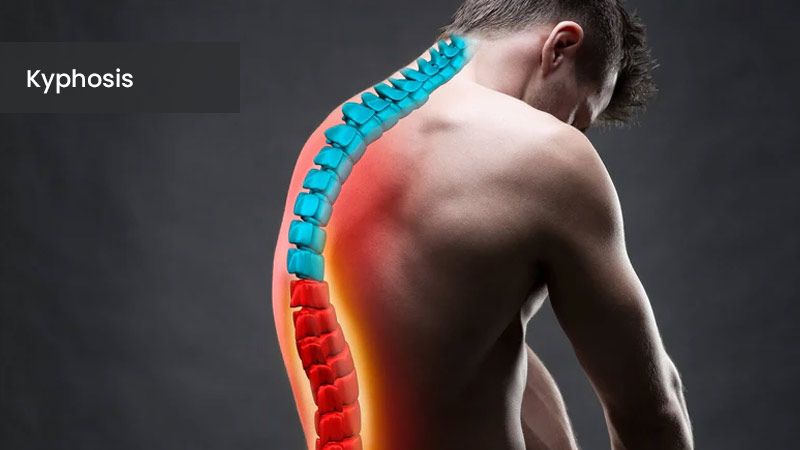
Kyphosis is an abnormal forward curvature of the spine, leading to a rounded or hunched posture. It can be caused by developmental issues, osteoporosis, spinal injuries, or certain medical conditions. Depending on the severity and underlying cause, treatment options may include physical therapy, bracing, pain management, and in severe cases, surgery.
Also check: Is kyphosis (roundback bending) of the spine treatable?
7. Scoliosis

Scoliosis is defined by an abnormal sideways curve of the spine. While most cases are mild, some can progress and lead to discomfort, breathing difficulties, and cosmetic concerns. Treatment for scoliosis depends on the severity of the curvature and may include observation, bracing, or corrective surgery.
8. Ankylosing Spondylitis

Ankylosing spondylitis is a chronic inflammatory condition that primarily affects the spine. It causes inflammation, pain, and stiffness, and can lead to the fusion of the vertebrae. This condition predominantly affects young adults and is more common in males. Treatment aims to manage symptoms, limit disease progression, and enhance quality of life. It may involve medication, physical therapy, exercise, heat therapy, and lifestyle modifications.
9. Cervical Spondylosis

Cervical spondylosis, also known as degenerative neck disease, refers to the degenerative changes that occur in the cervical spine (neck region). These changes involve the wear and tear of the spinal discs, bones, and ligaments. Symptoms may include neck pain, stiffness, headaches, and radicular symptoms that radiate into the arms. Treatment options include pain medication, physical therapy, neck exercises, and in severe cases, surgery.
10. Spondylolisthesis
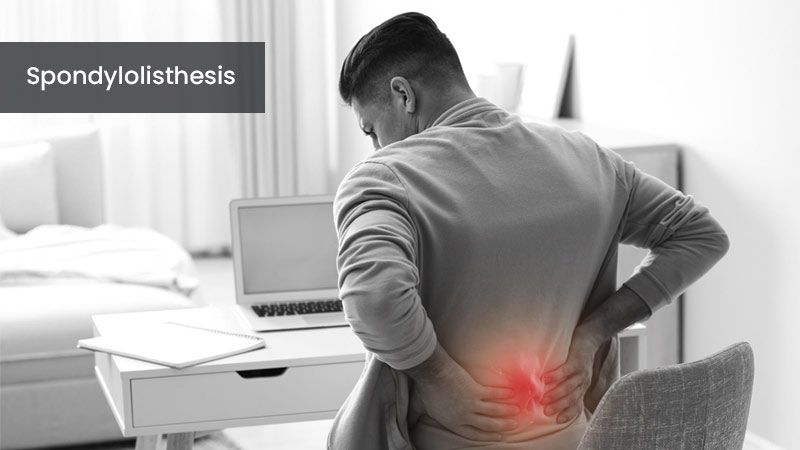
Spondylolisthesis occurs when one vertebra slips forward or backward concerning the surrounding vertebrae. This condition can result from various causes, including congenital defects, traumatic injuries, or degenerative changes. Symptoms can include back pain, nerve compression, and spinal instability. Treatment options vary depending on the severity and symptoms and may include rest, physical therapy, bracing, pain management, or surgery.
Conclusion
Our spines are like the hidden heroes of our bodies, silently supporting us through every twist, turn, and leap in life. Yet, they are vulnerable to a myriad of problems that can disrupt our daily existence. Maintaining a healthy lifestyle, practicing proper posture, engaging in regular exercise, and seeking prompt medical attention when necessary are crucial steps in safeguarding your spine. Remember, early intervention and a proactive approach can go a long way in preserving the well-being and functionality of this remarkable part of our bodies.
